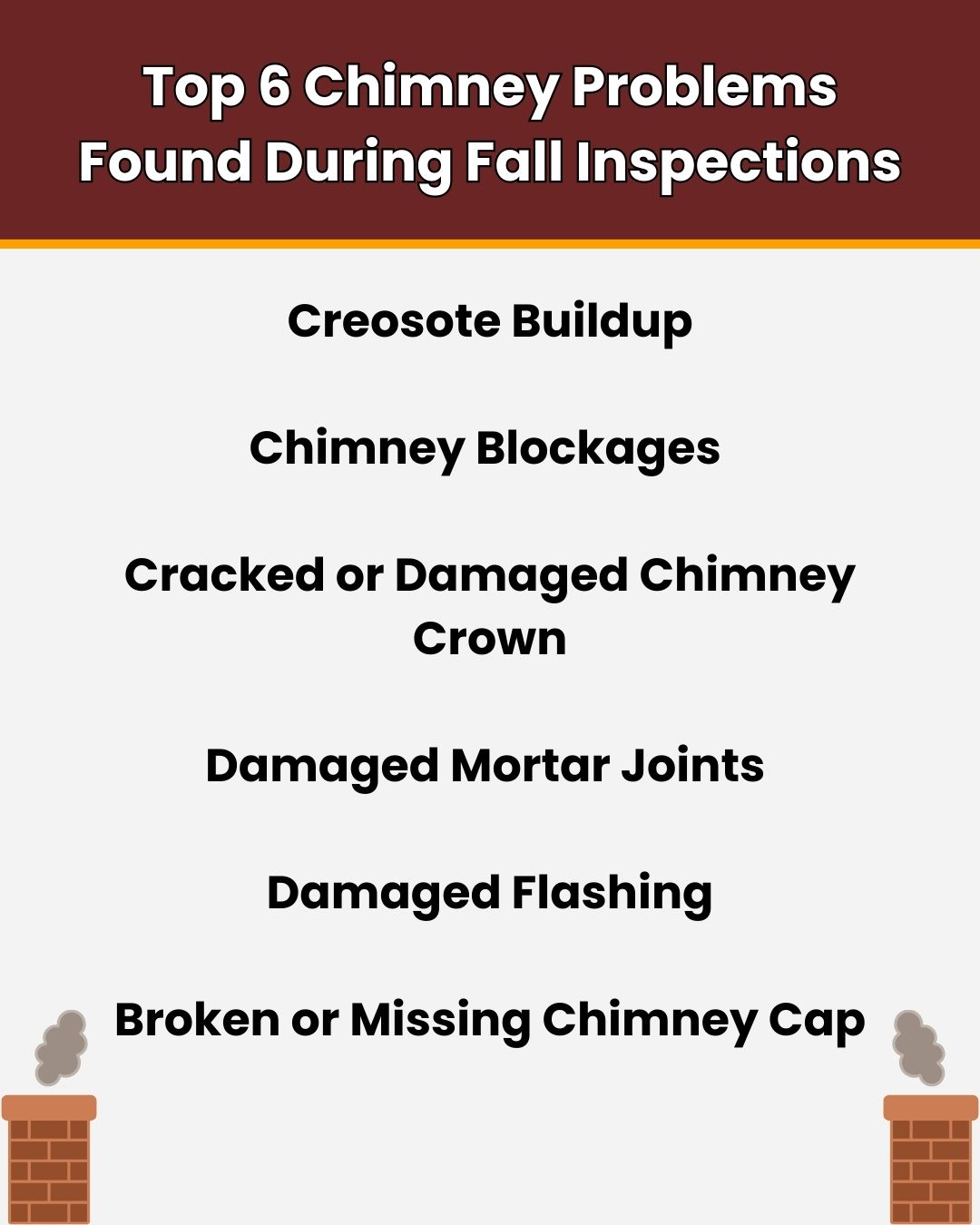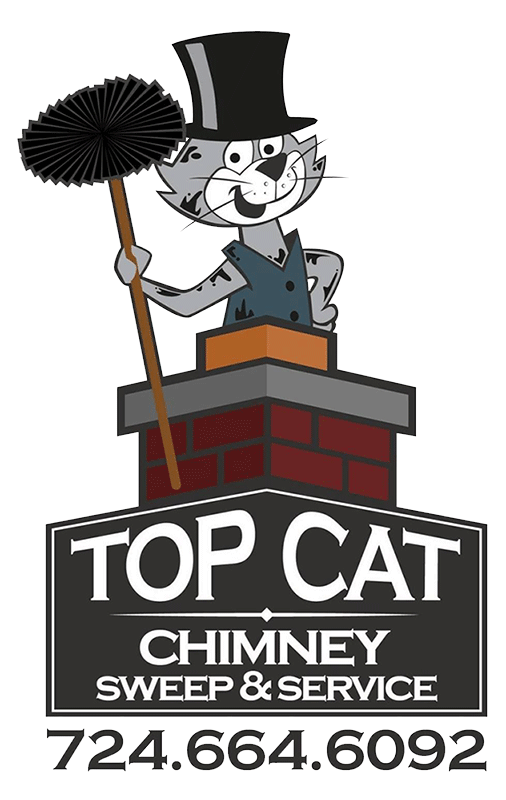Creosote Buildup
Creosote is one of the most common discoveries during chimney inspections, and it’s also one of the most hazardous. This dark, tar-like residue forms when smoke cools as it moves through the flue, causing unburned particles and vapors to condense on the chimney walls. The more frequently the fireplace is used, the quicker creosote accumulates. Layer after layer can harden, reducing airflow and increasing the chance of a fire inside the chimney.
Some homeowners notice reduced draft or a strong, smoky odor coming from the fireplace, both signs of significant buildup. A fall inspection determines how much creosote is present and whether professional sweeping is necessary to restore the chimney’s efficiency and reduce fire risk.
Chimney Blockages
Blockages inside the chimney are another frequent problem found during fall inspections. Small animals such as birds, squirrels, or raccoons often build nests inside the flue during warmer months, while wind and storms can deposit leaves and sticks. These obstructions interfere with proper ventilation, preventing smoke, carbon monoxide, and other gases from escaping as they should.
The result can be smoky fires or, in more severe cases, hazardous indoor air quality. Because many homeowners rarely look inside their flue, these blockages often go unnoticed until an inspection is performed. A technician can identify and clear these obstructions, ensuring that the fireplace will vent properly and safely once colder weather arrives.
Cracked or Damaged Chimney Crown
The crown is a vital protective feature, acting as a shield that directs rainwater away from the chimney structure. When cracks develop, they provide an entry point for moisture. Over time, water seeps into the masonry, and during freeze-thaw cycles in Pennsylvania winters, that moisture expands and worsens the damage. Homeowners may not notice these issues from the ground, but during an inspection, technicians are able to spot early cracks or crumbling areas. Repairing the crown before winter prevents further deterioration, protecting the structural integrity of the chimney and keeping moisture out of the flue system.
Damaged Mortar Joints
The bricks of a chimney are designed to last for decades, but the mortar that bonds them together is more vulnerable to weather exposure. Rain, snow, and seasonal temperature shifts all cause mortar to break down over time. Once gaps appear, water intrusion becomes a serious concern.
Moisture weakens the masonry, causes spalling, and can eventually destabilize the entire chimney if left unchecked. During a fall inspection, technicians check the condition of mortar joints and recommend tuckpointing when needed. This process replaces damaged mortar with fresh material, restoring stability and protecting the structure against further weathering. Proactive repairs like this save homeowners from larger restoration projects later on.

Damaged Flashing
Flashing is another area where issues commonly arise. This sheet metal barrier is installed where the chimney meets the roof, and it plays a critical role in preventing leaks. Over time, flashing can rust, loosen, or pull away from the roof surface. Even small gaps allow water to seep in, leading to interior water stains, rotted wood, and other expensive home repairs. Because flashing problems are often invisible from the ground, homeowners rarely spot them on their own. An inspection gives technicians the chance to evaluate flashing closely and recommend resealing or replacement. Addressing these issues before winter storms ensures that rain and melting snow stay out of the home.
Broken or Missing Chimney Cap
A well-functioning chimney cap might seem like a minor detail, but it serves as one of the chimney’s most effective defenses. A cap prevents rain, snow, animals, and debris from entering the flue while also reducing downdrafts. Without a cap – or with one that’s damaged – the chimney becomes vulnerable to water intrusion and blockages.
As time goes on, this moisture accelerates masonry deterioration and creates a welcoming environment for wildlife. Fall inspections confirm that a chimney cap is not only in place but also in good condition. If replacement is needed, it’s a straightforward repair that protects the entire chimney system from larger, more expensive damage.
Schedule Your Fall Chimney Inspection With Top Cat Chimney
Enjoying the warmth of a fireplace should be simple, but neglected chimney problems can quickly disrupt the season. Scheduling a fall inspection is the best way to address creosote buildup, blockages, cracks, leaks, and other issues before they interfere with your fireplace. Top Cat Chimney provides Kittanning homeowners with comprehensive inspections, detailed reporting, and expert repair solutions designed to keep chimneys functioning reliably. With our team’s guidance, small concerns can be resolved before they grow into costly repairs. Contact Top Cat Chimney today to schedule your inspection and get your system ready for the colder months with confidence.
